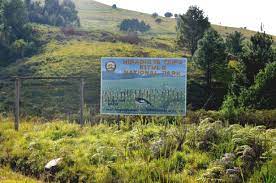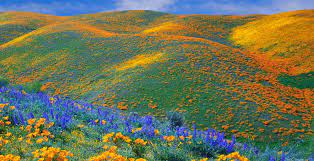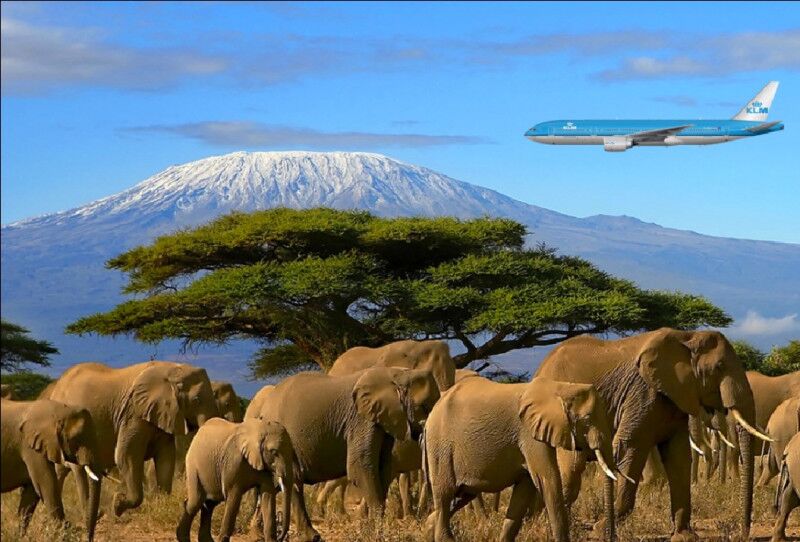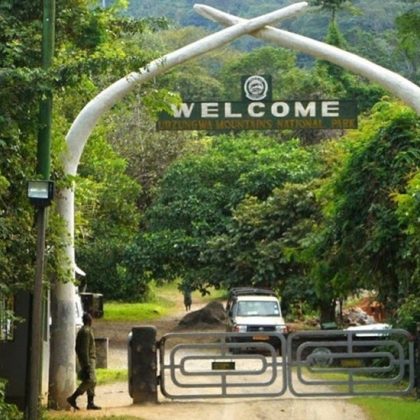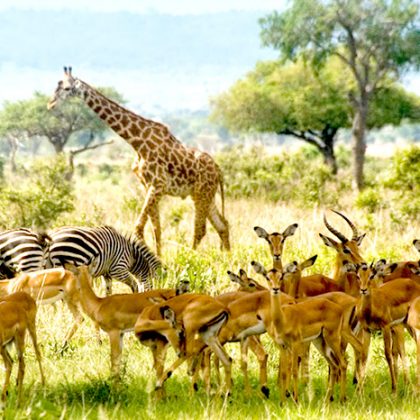Kitulo national park Tanzania
Locals refer to the Kitulo National park Tanzania Plateau as Bustani ya Mungu – The Garden of God –. In contrast, botanists have dubbed it the Serengeti of Flowers, host to ‘one of the great floral spectacles of the world’.
Kitulo national park in Tanzania is indeed a rare botanical marvel, home to a full 350 species of vascular plants, including 45 varieties of terrestrial orchids, which erupt into a riotous wildflower display of breathtaking scale and diversity during the main rainy season of late November to April.
Perched at around 2,600 meters (8,500 ft) between the rugged peaks of the Kipengere, Poroto, and Livingstone Mountains, the well-watered volcanic soils of Kitulo support the largest and the most important montane grassland community in Tanzania tourist attractive sites
Bustani ya Mungu (God’s Garden) is the visitor’s name given to this new park, the only of its kind in Africa where wildflowers, birds, and harmonious grass-eating mammals are dominating.
Kitulo Plateau is laying between the rugged peaks of the Kipengere, Livingstone, and Poroto Mountains in the Southern Highlands of Tanzania. It is the site of one of the world’s great floral spectacles.
Kitulo National Park Tanzania stands alone, boasting of being the only tourist attractive site in the continent offering more floristic visits than the traditional wildlife photographic holidays which most tourists to Tanzania are used to experiencing.
Tourists from all corners of the world are now exposed to this park and are expected to book their itineraries to this new park.
Kitulo National Park is the only natural habitat area in Africa perched on the sky at a higher altitude than any known park on the continent
Livingstone Forest in Kitulo National Park
The Livingstone forest is a montane evergreen forest that descends the southwestward-facing slope of the park. It is the largest block of forest in the park and the largest in the Kipengere Range. Thickets of bamboo (Yushania Alpina) can be found between the upper montane forests and the high-altitude grasslands. The Livingstone Forest lies in the former Livingstone Forest Reserve (240.34 km²), which was incorporated into the national park when it was created in 2005. The Bujingijila Gap, a narrow corridor of farms and tree plantations, separates the Livingstone Forest from the Mount Rungwe forests.
The Livingstone Forest is home to three limited-range species of mammals – the endangered Kipunji (Rungwecebus kipunji), Rungwe dwarf galago (Galagoides sp. nov.), and Abbott’s duiker (Cephalophus spadix). All three species also live in the forests of nearby Mount Rungwe.
In 2005, field scientists from the WCS discovered a new species of primate on and around Mount Rungwe and in the Livingstone Forest area of the park. Initially known as the Highland Mangabey, later changed to its Tanzanian name of Kipunji, it is one of the 25 most endangered primates in the world.
Ndumbi Forest In Kitulo national parrk
The Ndumbi forest, at the eastern end of Kitulo National Park, includes montane evergreen forest and forests of East African Cedar (Juniperus procera) The former Ndumbi Valley Forest Reserve (27.71 km²) was established in 1956 and was incorporated into the national park when it was created in 2005. The Ndumbi forest is also home to a 100-meter
Kitulo national park location in Tanzania
LOCATION: Mbeya and Njombe regions
AREA SIZE: 412.9 sq km (159 sq miles)
Kitulo national park is located in the Mbeya region Kitulo Plateau is perched between the rugged peaks of the Kipengere, Livingstone, and Poroto Mountains in the Southern Highlands of Tanzania. It is the site of one of the world’s great floral spectacles.
How to get to Kitulo National park
Charter flights from Dar es Salaam (Dar) or Arusha are the easiest way to reach the plateau. A tough but spectacular day’s drive from Mbeya (550 km/340 miles) or in the dry season only from Kigoma (390 km/240 miles) is also an option. It is possible to reach Mpanda by rail from Dar via Tabora, then to catch public transport to Sitalike, where game drives can be arranged. If traveling overland, allow plenty of time to get there and back.
Best time to visit Kitulo national park When To Go
The dry season (May-October) is the best time to visit the park. Roads within the park are often flooded during the rainy season but may be passable from mid-December to February
Wildflowers blossom between December and April, and the summer months from September to November are best to visit the park. From June to August the entire park is foggy with no visibility during the daytime, and it is hardly possible to view its beauty.
Kitulo national park attractions
There are about 400 plant species; most of them are wildflowers and other such attractive, natural plants, which no doubt at all, will attract visitors to go there. Recorded 45 endemic orchid species are found only in the park than in any other part of the world.
The park covers 413 kilometers of forestland, dominated by plants and a few wild animals which together form a natural habitat that is tourist attractive by it. The park’s scenery is as comparable to the Biblical Garden of Eden, as most visitors there say.
Added to its natural attractions and uniqueness, Kitulo Plateau is the natural resting site for intercontinental migrating birds during periods of the year on their way to Europe.
It is only in this park where migrating Storks rest while flying from Cape Town in South Africa to Northern Europe.
European White Storks and other species of Storks from Scandinavian countries via West Africa migrate to brood inside Kitulo Plateau on their way, flying across the European and African continents every year.
These big, attractive birds stop in this park for some months and later continue with their long journey across the continent.
Birds of kitulo national park Tanzania
This natural botanical garden is highly alluring to bird watchers who thrill to sightings of rare Denham’s bustard, the endangered blue swallow, mountain marsh widow, Njombe cisticola, and Kipengere seedeater.
Having its unique flower species remained wild, with birds singing and migrating to the highland forests, Kitulo Plateau National Park is the latest and a newcomer to Tanzania’s tourist attraction sites.
Kitulo national park flowers
Local people refer to the Kitulo Plateau as Bustani ya Mungu – The Garden of God – while botanists have dubbed it the Serengeti of Flowers, host to ‘one of the great floral spectacles of the world’.
And Kitulo is indeed a rare botanical marvel, home to a full 350 species of vascular plants, including 45 varieties of terrestrial orchids, which erupt into a riotous wildflower display of breathtaking scale and diversity during the main rainy season of late November to April.
Perched at around 2,600 meters (8,500 ft) between the rugged peaks of the Kipengere Poroto and the Livingstone Mountains, the well-watered volcanic soils of Kitulo support the largest and most important mountain grassland community in Tanzania.
Kitulo national park animals
Africa’s big game is not common on the plateau, though a few mountain reedbuck and eland roam across the grassland. What Kitulo lacks in large animals, however, it more than makes up for in plants, birds, and butterflies. It is home to Tanzania’s only population of the rare Denham’s bustard, and the park also supports a breeding colony of the endangered blue swallow. These birds and colorful butterflies flitting through the rainbow carpet of flowers make Kitulo a botanist’s and hiker’s paradise. It is truly God Garden.
Kitulo national park fees
Fees and park entrance price for Kitulo National Park is divided into three categories
- East African citizen
- None East African citizen
- Expatriates/ Residents Living in Tanzania
Kitulo national park accommodation
There is one seasonal, luxury-tented camp overlooking Lake Chada. A rest house at Sitalike and campsites inside the park are also available along with basic but clean hotels at Mpanda.
Accommodation is available at Matamba and Chimala, but for a more comfortable stay, Mbeya municipality, some 100 km away is an option.
Because of its cool and moderate weather similar to Mediterranean or European conditions.
the area has since then attracted many British and American settlers who reared livestock and practiced small-scale tourist projects.
8 Hotels (accommodation) near Kitulo National Park in Mbeya
- ROYAL TUGHIMBE HOTEL.
- Kaunda Avenue Mbeya Hotels.
- Kiribati Center. Mahakama Avenue Mbeya Guest houses.
- Malaysia Rest House.
- Matema Lake Shore Resort.
- Utengule Coffee Lodge.
- Ifisi Community Centre
- Fq Hotel Mbeya.
What to do in Kitulo national park Tanzania
- Good hiking trails exist and soon will be developed into a formal trail system.
- Open walking across the grasslands to watch birds and wildflowers.
- Hill climbing on the neighboring ranges. A half-day hike from the park across the Livingstone Mountains leads to the sumptuous Matema Beach on Lake Nyasa.
- Walking, driving and camping safaris are all available as well as bird watching


